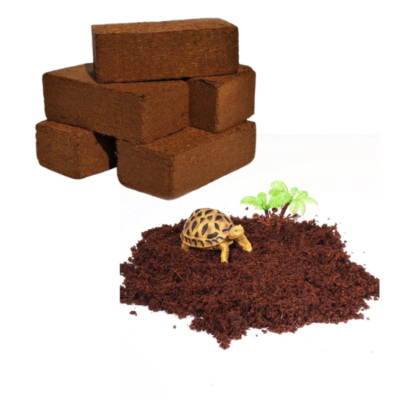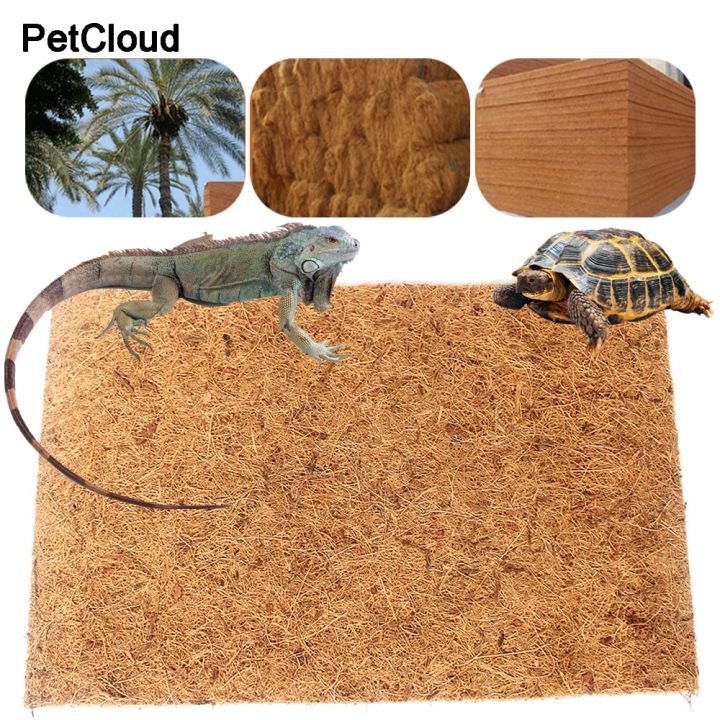In recent years, coco peat has emerged as a popular substrate choice among reptile owners for its numerous benefits and suitability for a wide range of reptile species. In this comprehensive guide, we’ll delve into why coco peat stands out as the top choice for your reptile pet, exploring its properties, advantages, and considerations for usage.

What is coco peat?

Learn about coco peat
Coco peat, also known as coconut fiber, is a natural fiber extracted from coconut shells. It is a by-product of the coconut industry and is widely used in horticulture, agriculture and is now used as a substrate for reptiles. Coconut peat is lightweight, absorbent, and biodegradable, making it an environmentally friendly choice for reptile habitats.
Advantages of coco peat for reptiles
Natural and safe Coco peat :
Coconut peat does not contain toxic chemicals and additives, so it is safe for reptiles. It mimics the natural environment of many reptiles, providing a comfortable and familiar substrate.
Moisturizing:
One of the main benefits of coco peat is its excellent moisturizing properties. It absorbs and retains moisture effectively, creating a humid microclimate in the enclosure, which is essential for reptiles with specific humidity requirements.
Odor control:
Coconut peat helps absorb and neutralize odors, keeping the reptile enclosure fresh and clean. This is especially beneficial for reptiles that have a strong odor or live in enclosed spaces.
Soft and comfortable:
The soft and fibrous texture of coco peat provides a comfortable substrate for reptiles to walk, burrow and dig. It reduces the risk of scratches or injuries, especially for reptiles with sensitive skin or delicate abdomens.
Coco peat natural burrowing substrate :
Many reptiles, such as geckos and snakes, are natural burrowers. Coconut peat provides an ideal substrate for burrowing, allowing reptiles to engage in natural behaviors and feel secure in their environment.
Easy to clean:
Coco peat is easy to clean and replace when necessary. Its loose structure allows easy removal of waste without affecting the entire substrate, simplifying routine maintenance.
Considerations when using
Although coco peat offers many benefits, there are a few things to keep in mind when using it as a substrate for reptiles:
- Dust: Coconut peat may produce some dust particles when first introduced or disturbed. Substrate should be moistened before use to minimize dust and ensure respiratory health for reptiles.
- Mold growth: Due to its high moisture holding capacity, coco peat can be susceptible to mold growth if not stored properly. Regular spot cleaning, proper ventilation and humidity monitoring can help prevent mold problems.
- Compatibility: Although suitable for many reptiles, coco peat may not be ideal for all reptiles. Some species may prefer substrates of different textures or may have specific requirements that coco peat cannot meet. It is essential to research your reptile’s specific needs before choosing a substrate.
Conclusion
In conclusion, coco peat emerges as the best choice for reptile keepers looking for a natural, safe and effective substrate for their pets. Its moisture retention, odor control and comfort properties make it an ideal choice for creating suitable habitats for many reptiles. By understanding the benefits and considerations for use, reptile owners can provide their pets with a comfortable and enriching environment that promotes health and happiness.
– Email: info@hxcorp.com.vn
Related articles
Water hyacinth – From waste to unique and diverse products
Instructions for choosing chewing sticks suitable for the size and age of your dog.
What is coffee wood dog bone? How it works?




